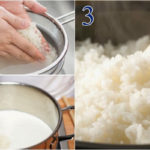Baby-led weaning is an optimistic and proactive feeding method for infants. Let’s explore the BLW diet and how to implement this approach for your little one.
1 What is Baby-Led Weaning (BLW)?
Baby-Led Weaning, or BLW, is a self-feeding approach popular in Europe that has recently gained traction in Vietnam. This method empowers infants to choose and eat what they like, with parents respecting their decisions and preferences.
 What is Baby-Led Weaning?
What is Baby-Led Weaning?
BLW stimulates infants’ physical and cognitive development, particularly their motor skills and ability to handle new situations.
The BLW approach adheres to the following principles:
- Breast milk remains the primary source of nutrition at this stage.
- While infants choose their meals, offer a variety of foods from four groups: carbohydrates, protein, fats, and vitamins/minerals.
- Gradually increase portion sizes and introduce different food textures, from smooth to chunky and liquid to solid.
- Ensure the feeding method, timing, and food choices are age-appropriate.
- Encourage regular mealtimes and family dining.
- Avoid forcing infants to eat beyond their appetite or foods they dislike.
2 Benefits of the BLW Approach
BLW enables infants to self-regulate their food intake, fostering the development of essential skills like hand-eye coordination to adapt to their eating abilities.
 Benefits of the BLW Approach
Benefits of the BLW Approach
Additionally, BLW helps infants recognize and differentiate foods, allowing their digestive system to adapt, improve, and optimize. Long-term implementation allows parents to monitor and assess their child’s development and tailor their menu accordingly.
Nutritionists also believe that BLW reduces the risk of childhood obesity as infants eat according to their appetite and stop when full.
3 Considerations for BLW
 Considerations for BLW
Considerations for BLW
According to the World Health Organization (WHO), infants should start complementary feeding at six months when their digestive system can handle more complex foods.
Always cook infant meals thoroughly and avoid raw or undercooked foods, as their immature digestive systems cannot process them effectively.
Ensure infants sit upright while eating to prevent choking or aspiration.
Refrain from adding salt and sugar to infant meals.
Cut foods into small, manageable pieces for infants to grasp and consume.
Offer three to four food options per meal to avoid overwhelming infants.
This article has provided insights into the BLW approach, its benefits, and considerations. We hope it empowers you to make informed decisions about your child’s feeding journey.
Source: World Health Organization (WHO)
5 Common Mistakes When Applying Self-led Weaning Method for Babies
Baby-led weaning (BLW) is a popular method used by many mothers to introduce solid foods to their babies. Join us as we take a look at the 5 common mistakes often made when implementing the baby-led weaning approach for your little ones.
6 Pivotal Moments to Teach Your Children Independence: A Recipe for Their Future Success and Gratitude
Introducing the art of instilling independence in your child: Empowering them to take charge of their lives and fostering a sense of responsibility. It is imperative for parents to embrace these pivotal stages in their children’s lives, seizing the opportunity to nurture their decision-making skills and, in turn, cultivate a strong sense of independence.
The Magic of Cooking Rice with Milk: Uncover the Unexpected Benefits with Just One Try
“Old rice, with its slightly musty aroma, poses a dilemma – wasteful to discard, yet unappetizing to consume. A simple solution exists: adding milk to the rice during cooking imparts a subtle, pleasant milk fragrance, effectively masking any unwanted odors. This clever trick transforms the rice, making it a delightful culinary experience once more.”





































